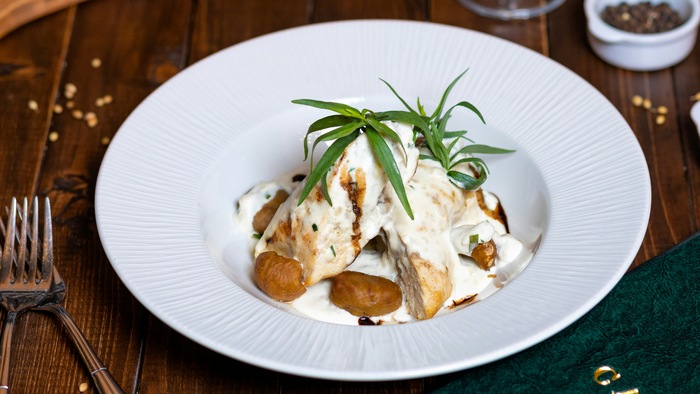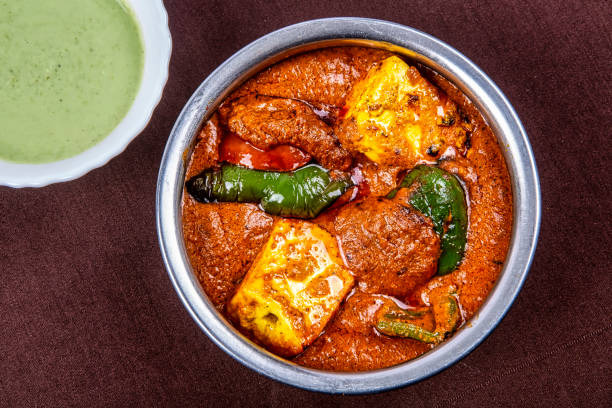Fusion cuisine has become a hallmark of contemporary culinary creativity, captivating taste buds with its harmonious blend of flavors from different cultures. From the streets of New York City to the bustling markets of Bangkok, fusion dishes have found their way onto menus worldwide, offering a tantalizing journey through diverse culinary traditions. In this comprehensive guide, we’ll delve into the vibrant world of fusion cuisine, uncovering its origins, exploring cultural influences, dissecting key ingredients and techniques, identifying popular trends, mastering the art of creation, addressing challenges, and providing practical tips for home cooks eager to embark on their fusion culinary adventures.
I. Introduction to Fusion Cuisine
A. Definition and Origin
Fusion cuisine, often referred to as “culinary fusion,” is the art of combining elements of different culinary traditions to create innovative and harmonious dishes. The concept of fusion cuisine traces back centuries, with historical examples of cultural exchange through trade routes and conquests leading to the blending of ingredients and cooking techniques. However, it wasn’t until the late 20th century that fusion cuisine emerged as a prominent culinary movement, fueled by globalization and the increasing interconnectedness of cultures.
B. Evolution Over Time
The evolution of fusion cuisine mirrors the evolving dynamics of cultural exchange and migration patterns throughout history. What began as a natural consequence of trade and conquest has evolved into a deliberate culinary practice, with chefs around the world pushing the boundaries of flavor combinations and cooking methods. From the fusion sushi rolls of Japan to the kimchi tacos of Los Angeles, fusion cuisine continues to evolve and adapt, reflecting the changing tastes and preferences of global consumers.
C. Importance of Fusion Cuisine in Contemporary Culinary Scene
In today’s culinary landscape, fusion cuisine plays a pivotal role in driving innovation and creativity. It offers chefs a platform to showcase their culinary prowess and experiment with bold flavor combinations, challenging traditional notions of authenticity and regional boundaries. Moreover, fusion cuisine has become a cultural phenomenon, appealing to adventurous eaters seeking novel dining experiences and culinary adventures.
D. Common Misconceptions
Despite its popularity, fusion cuisine is often subject to misconceptions and criticism. Some purists argue that fusion dishes lack authenticity and dilute the cultural integrity of traditional cuisines. However, proponents of fusion cuisine argue that it celebrates diversity and fosters cultural exchange, enriching culinary traditions rather than diluting them. Ultimately, the success of fusion cuisine lies in its ability to strike a delicate balance between honoring culinary heritage and embracing innovation.
II. Understanding Cultural Influence in Fusion Cuisine
A. Impact of Globalization on Culinary Traditions
Globalization has profoundly influenced culinary traditions, facilitating the exchange of ingredients, techniques, and culinary concepts across borders. As people migrate and cultures converge, culinary boundaries blur, giving rise to hybrid cuisines that reflect the diverse tapestry of human experience. Fusion cuisine thrives in this globalized landscape, serving as a culinary melting pot where flavors from around the world converge.
B. Fusion as a Reflection of Cultural Exchange
At its core, fusion cuisine is a testament to the interconnectedness of cultures and the power of culinary diplomacy. It embodies the spirit of cultural exchange, bridging divides and fostering understanding through shared culinary experiences. Whether it’s a Japanese-inspired pizza or a Mexican-inflected curry, fusion dishes offer a glimpse into the rich tapestry of human culture, celebrating diversity and unity in equal measure.
C. Examples of Fusion Cuisine Around the World
Fusion cuisine knows no bounds, with examples of culinary fusion found in every corner of the globe. In the United States, the rise of food trucks has given birth to innovative mashups like Korean barbecue tacos and Vietnamese banh mi burgers. In Europe, chefs experiment with fusion techniques, blending traditional French and Italian flavors with influences from North Africa and the Middle East. Meanwhile, in Asia, fusion cuisine takes on new dimensions, with chefs reinventing classic dishes with a modern twist.
D. The Role of Immigrant Communities
Immigrant communities play a pivotal role in shaping the culinary landscape of their adopted countries, bringing with them the flavors and traditions of their homelands. In cities like New York and London, ethnic enclaves serve as incubators for culinary innovation, giving rise to fusion dishes that blend old-world traditions with new-world influences. Immigrant chefs serve as cultural ambassadors, introducing unfamiliar flavors to curious palates and enriching the culinary tapestry of their adopted homes.
III. Key Ingredients and Techniques in Fusion Cuisine
A. Harmonizing Flavors
Central to the art of fusion cuisine is the skillful harmonization of flavors from disparate culinary traditions. Chefs must balance sweet, savory, sour, and spicy elements to create dishes that are greater than the sum of their parts. Whether it’s a Thai-inspired pizza or a Mexican-inflected stir-fry, successful fusion dishes strike a delicate balance between contrasting flavors, resulting in a symphony of taste sensations.
B. Mixing Cooking Techniques
Fusion cuisine often involves the blending of cooking techniques from different culinary traditions. Whether it’s stir-frying, grilling, braising, or steaming, chefs draw inspiration from a diverse array of cooking methods to create dishes that are both familiar and innovative. By combining traditional techniques with modern culinary innovations, chefs push the boundaries of flavor and texture, creating dishes that surprise and delight the senses.
C. Creative Use of Ingredients
One of the hallmarks of fusion cuisine is its creative use of ingredients, with chefs often drawing inspiration from unexpected sources. Whether it’s incorporating exotic spices, tropical fruits, or artisanal cheeses, fusion dishes celebrate the diversity of the culinary world, turning ordinary ingredients into extraordinary creations. By experimenting with new ingredients and flavor combinations, chefs keep fusion cuisine fresh and exciting, constantly pushing the boundaries of culinary innovation.
D. Balancing Cultural Elements
Successful fusion cuisine pays homage to the culinary traditions that inspire it while also embracing innovation and creativity. Chefs must strike a delicate balance between honoring cultural authenticity and pushing the boundaries of culinary experimentation. By respecting the ingredients, techniques, and flavors of different culinary traditions, chefs create dishes that resonate with diners on a deeply personal level, evoking memories of home while also offering a taste of something new and exciting.
IV. Popular Fusion Cuisine Trends
A. Asian Fusion: A Global Phenomenon
Asian fusion cuisine has become a global phenomenon, captivating diners with its bold flavors and innovative dishes. From sushi burritos to ramen burgers, Asian fusion dishes blend traditional Asian ingredients and techniques with global culinary influences, creating dishes that are both familiar and exotic. With the rise of social media and food tourism, Asian fusion cuisine has transcended cultural boundaries, inspiring chefs and food lovers around the world.
B. Latin Fusion: A Spicy Twist
Latin fusion cuisine combines the vibrant flavors of Latin America with influences from around the world, resulting in dishes that are bold, spicy, and full of character. Whether it’s a Peruvian-Japanese ceviche or a Cuban-inspired sandwich, Latin fusion dishes celebrate the rich culinary heritage of Latin America while also embracing global influences. With its emphasis on fresh ingredients, bold flavors, and vibrant colors, Latin fusion cuisine offers a feast for the senses.
C. Mediterranean Fusion: A Taste of the Sea
Mediterranean fusion cuisine draws inspiration from the diverse culinary traditions of the Mediterranean region, blending flavors from Italy, Greece, Spain, and beyond. Whether it’s a Moroccan-inspired paella or a Greek-style pizza, Mediterranean fusion dishes showcase the vibrant flavors and ingredients of the Mediterranean diet in exciting new ways. With its emphasis on fresh seafood, olive oil, and aromatic herbs and spices, Mediterranean fusion cuisine offers a healthy and delicious culinary experience.
D. Middle Eastern Fusion: The Blend of Spices
Middle Eastern fusion cuisine combines the bold flavors and exotic spices of the Middle East with influences from Asia, Africa, and Europe, resulting in dishes that are rich, aromatic, and full of depth. Whether it’s a Lebanese-inspired falafel burger or a Persian-inflected tagine, Middle Eastern fusion dishes celebrate the diverse culinary traditions of the region while also embracing global influences. With its emphasis on bold flavors, exotic spices, and aromatic herbs, Middle Eastern fusion cuisine offers a culinary journey like no other.
V. The Art of Creating Fusion Dishes
A. Experimentation and Innovation
Central to the art of creating fusion dishes is a spirit of experimentation and innovation. Chefs must be willing to think outside the box, push the boundaries of culinary tradition, and embrace unexpected flavor combinations. By experimenting with new ingredients, techniques, and flavor profiles, chefs can create dishes that surprise and delight diners, offering a fresh perspective on familiar flavors and ingredients.
B. Importance of Understanding Flavor Profiles
Understanding flavor profiles is essential to creating successful fusion dishes. Chefs must have a deep understanding of the ingredients they’re working with, as well as the cultural traditions that inspire them. By understanding the flavor profiles of different cuisines, chefs can create dishes that harmonize seamlessly, balancing sweet, savory, sour, and spicy elements to create a symphony of taste sensations.
C. Incorporating Traditional Techniques with a Modern Twist
Successful fusion dishes often involve the incorporation of traditional cooking techniques with a modern twist. Whether it’s using sous vide to cook traditional Korean barbecue or incorporating molecular gastronomy techniques into classic French cuisine, chefs draw inspiration from a diverse array of culinary traditions to create dishes that are both familiar and innovative. By marrying traditional techniques with modern culinary innovations, chefs can create dishes that push the boundaries of flavor and texture, offering diners a truly memorable dining experience.
D. Presentation and Aesthetics
In fusion cuisine, presentation is just as important as flavor. Chefs must pay careful attention to the visual appeal of their dishes, using color, texture, and composition to create visually stunning presentations that stimulate the senses. Whether it’s a beautifully plated sushi roll or an intricately garnished curry, the presentation of a dish can elevate the dining experience, adding an extra layer of enjoyment to the meal.
VI. Challenges and Considerations in Fusion Cuisine
A. Cultural Sensitivity
One of the challenges of fusion cuisine is navigating the cultural sensitivities and complexities inherent in blending flavors and ingredients from different culinary traditions. Chefs must be mindful of cultural appropriation and respectful of the culinary heritage of the cultures they draw inspiration from. By approaching fusion cuisine with sensitivity and humility, chefs can create dishes that celebrate diversity and foster cultural understanding.
B. Maintaining Authenticity
Another challenge of fusion cuisine is maintaining authenticity while also embracing innovation and creativity. Chefs must strike a delicate balance between honoring the traditions and techniques of the cultures they draw inspiration from and pushing the boundaries of culinary experimentation. By respecting the ingredients, techniques, and flavors of different culinary traditions, chefs can create dishes that are both authentic and innovative.
C. Balancing Familiarity with Novelty
Finding the right balance between familiarity and novelty is essential to the success of fusion cuisine. While diners are often drawn to fusion dishes for their innovative flavor combinations and exotic ingredients, they also crave the comfort and familiarity of traditional cuisines. Chefs must strike a delicate balance between offering diners something new and exciting and providing a sense of familiarity and comfort.
D. Overcoming Resistance to Change
Despite its popularity, fusion cuisine can sometimes face resistance from diners who are hesitant to embrace unfamiliar flavors and ingredients. Chefs must be willing to educate and engage diners, offering them a glimpse into the creative process behind fusion cuisine and encouraging them to step outside their culinary comfort zones. By fostering a sense of curiosity and adventure, chefs can overcome resistance to change and inspire diners to embrace the bold flavors and innovative dishes of fusion cuisine.
VII. Embracing Fusion Cuisine: Tips for Home Cooks
A. Start with Familiar Ingredients
For home cooks eager to explore the world of fusion cuisine, starting with familiar ingredients is key. By incorporating familiar flavors and ingredients into their dishes, home cooks can ease into the world of fusion cuisine without feeling overwhelmed.
B. Experiment with Flavors and Textures
Don’t be afraid to experiment with flavors and textures in your fusion dishes. Whether it’s adding a splash of soy sauce to a traditional pasta dish or incorporating exotic spices into a classic roast chicken, experimenting with new flavors and textures is what fusion cuisine is all about.
C. Explore Fusion Recipes Online and in Cookbooks
There are countless fusion recipes available online and in cookbooks, providing endless inspiration for home cooks eager to explore the world of fusion cuisine. Take the time to browse through recipes, experiment with different flavor combinations, and find dishes that appeal to your taste buds.





